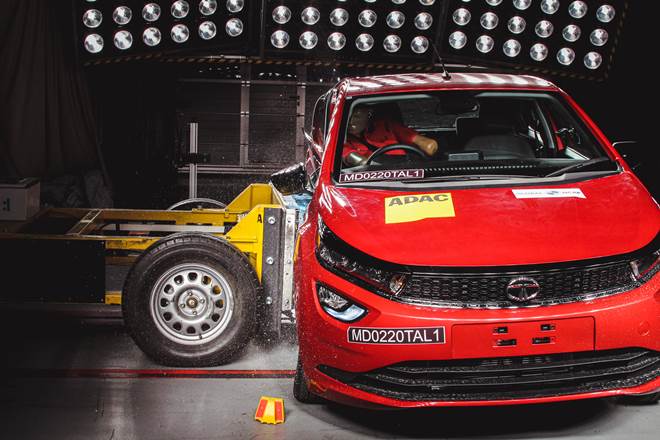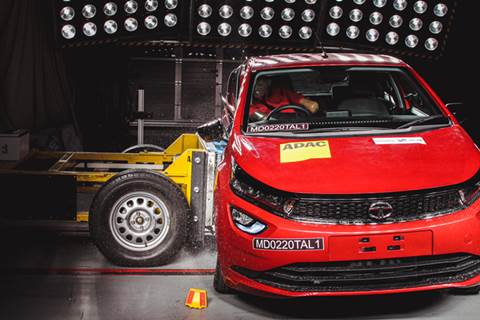
By Mayank Pareek
Manufacturing robust vehicles contributes immensely towards building a strong nation. The evolution of car safety has been a constant process, and due to the technological advancements the bar of safety features offered currently is expected to be raised. Currently, India is witnessing a humungous increase in the number of vehicles being driven out of various showrooms on a daily basis. According to figures from the Society of Indian Automobile Manufacturers (SIAM), the industry moved a total of 33.7 lakh passenger cars in FY19. To address this growing volume of cars on our roads, various ministries and government departments are working on upgrading and strengthening the road and traffic infrastructure in the country to rein in rash driving and the ensuing accidents.




Last year, over 1,51,000 casualties were recorded due to traffic accidents across India, which is equivalent to about 400 fatalities a day. Of this, a substantial percentage of people lost their lives due to the absence of basic safety features in their vehicles. Understanding the severity and the need of safety features in a car, the government made certain safety norms mandatory from this year onwards, such as airbags, speed limit indicators, ABS, speed alert system, reverse parking sensors, driver and front passenger seatbelt reminder, manual override for the central locking system, crash test norms compliance and so forth. Likewise, new norms for pedestrian safety (applicable for new models from October 1, 2018) will become applicable for all models from 2020 onwards. Hence, I see the coming decade as the ‘decade for safer cars’ in India. Along with cleaner emissions (by virtue of BS-4 and subsequent Bharat Stage norms), the 2020s, by design—both literally and figuratively—will see a lot safer cars in our country.
How to make safer cars
Now, the responsibility lies with all the automakers on how we plan to liaise with the government and work towards a common vision of a ‘safe Bharat’. Manufacturing a car that hosts an array of safety features throws a variety of challenges, overcoming which demands a deep understanding of vehicle safety technology (VST) at every stage. Right from designing a car to its engineering and testing, the quality of work needs to be top-notch to meet the ever-evolving parameters of crash tests. In the real world scenario, several types of accidents may occur. A representative set is smartly chosen in product development to ensure the real-world safety. The safety development also encompasses subsystems and component level assessments to drive real-world performance robustness.
But what’s challenging is bringing in maximum safety at an affordable cost, so that the cost of a vehicle does not shoot up dramatically. At present, Indian OEMs have to source most of the latest safety features from all around the world, as the suppliers here still don’t have the wherewithal to localise the required technologies. For instance, the high strength grade steel is not available in India yet. Having said that, the suppliers are steadily and proactively working towards reducing the gap by producing steel of high quality using the best of technologies.
The Tata Nexon, in 2018, got a five-star rating from the Global New Car Assessment Programme (Global NCAP). The car was tested for frontal and side impacts, providing the highest adult occupant safety. This feat has once again been accomplished by our premium hatchback, the Altroz, which received its own five-star rating from the Global NCAP. The Indian car buyer is increasingly paying attention to the importance of safety in a car, and is slowly drifting towards products that are a holistic package. These customers, including the millennials, are looking for cars that provide a mix of safety, practicality and entertainment.
Electric cars and safety
Last year, the Ministry of Road Transport and Highways emphasised that, by 2022, most of our vehicle safety will be on a par with global standards, and some safety features may even surpass the standards of the US, one of the most (if not the most) advanced auto markets in the world. Driving into the future of car safety will only be an uphill task, what with the growing popularity of electric vehicles (EVs), which will come with their own inherent challenges due to the presence of high voltage in these cars.
The development of such cars will warrant them to meet additional requirements, due to the flow of massive currents in EVs, in addition to the active and passive safety requirements of a conventional vehicle. At Tata Motors, we are also undertaking R&D on advanced driver assistance system (ADAS) as well as full vehicle autonomy in order to be future-ready. All said and done, the next 10 years or so will be a watershed period for our industry, with respect to critical and futuristic aspects such as safety, emissions, connected mobility and EVs, to name a few.
Author: Mayank Pareek – The author is President, Passenger Vehicles Business Unit (PVBU), Tata Motors. Views are personal.
Disclaimer: The views and opinions expressed in this article are solely those of the original author. These views and opinions do not represent those of The Indian Express Group or any employees.




















